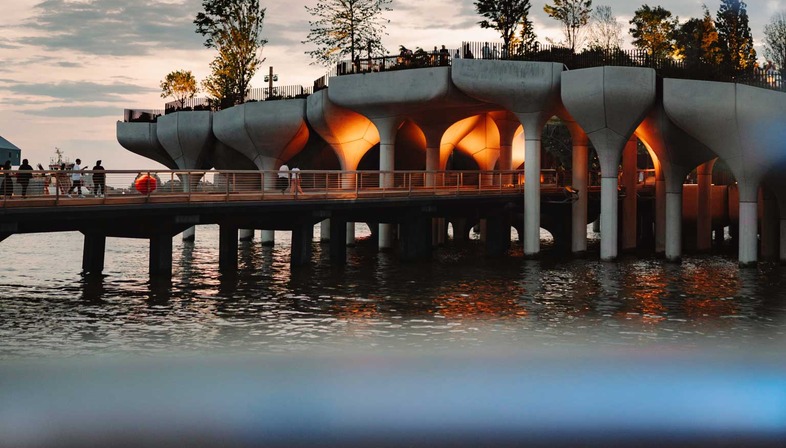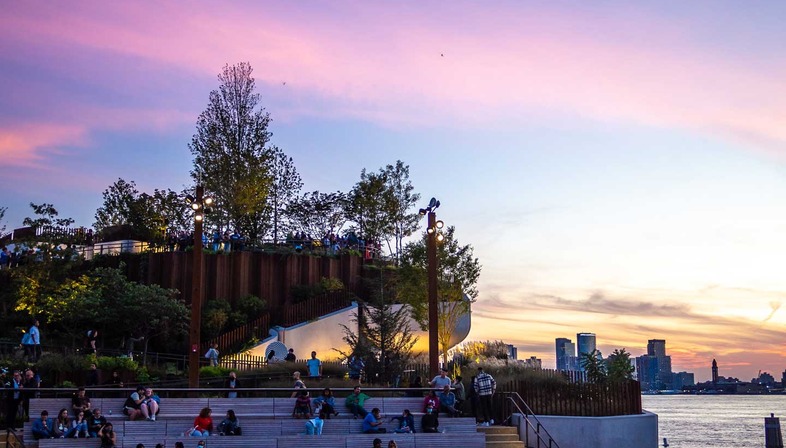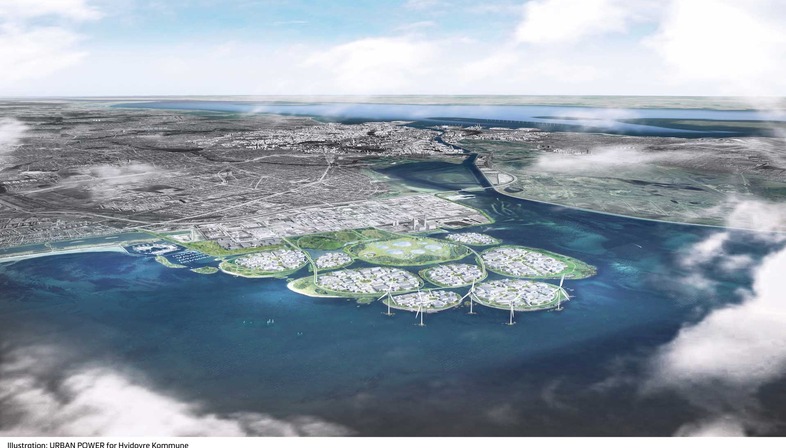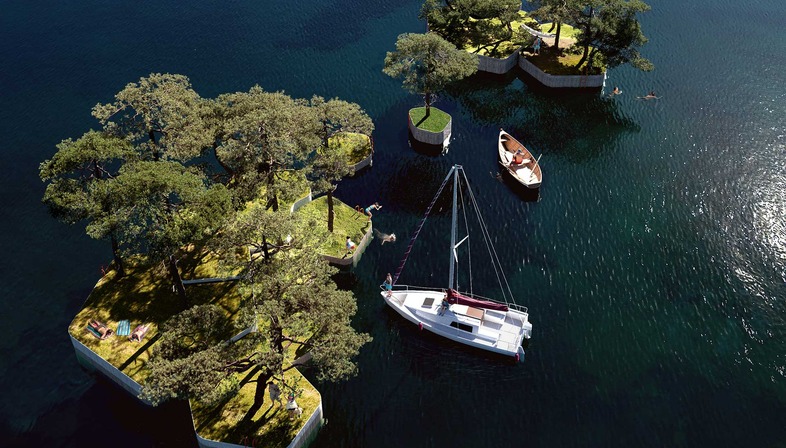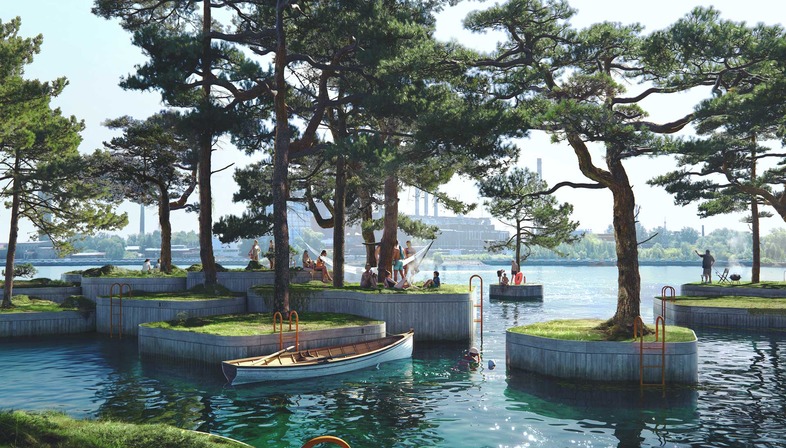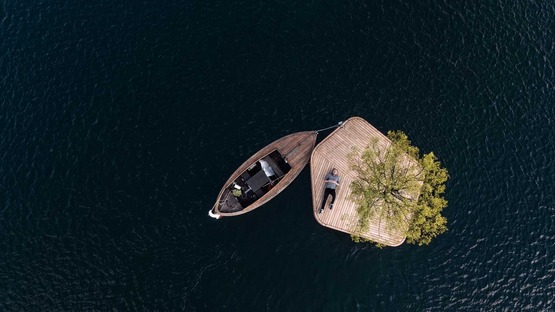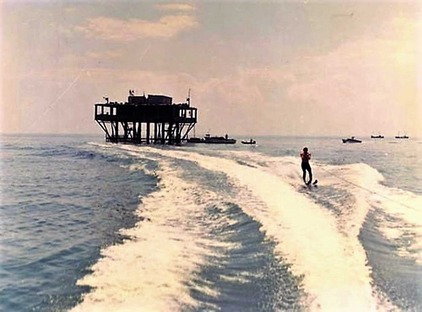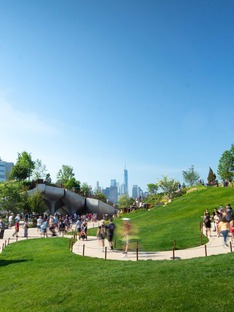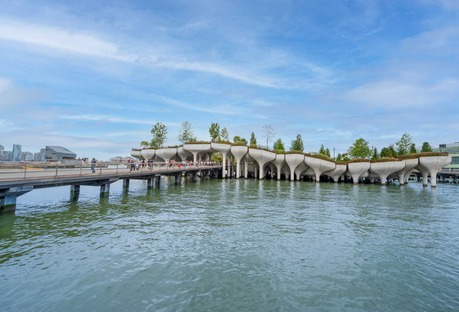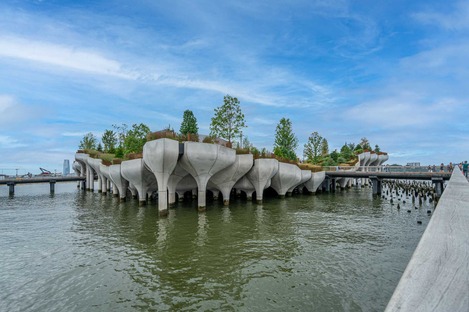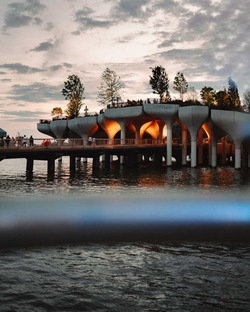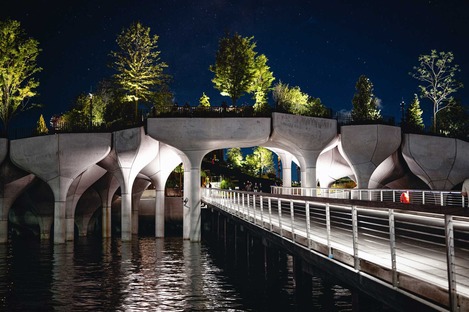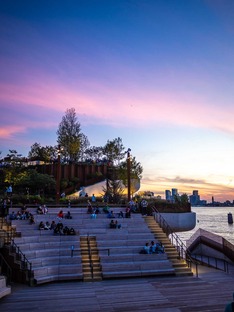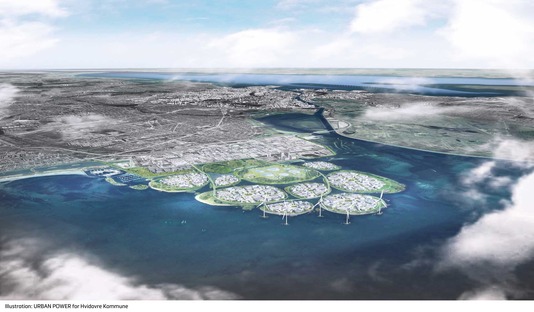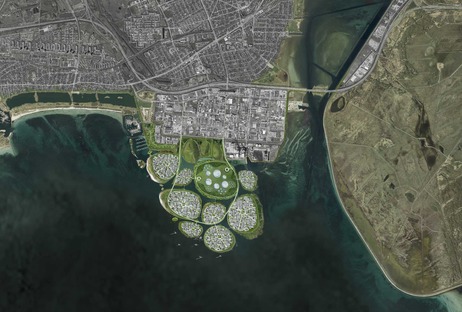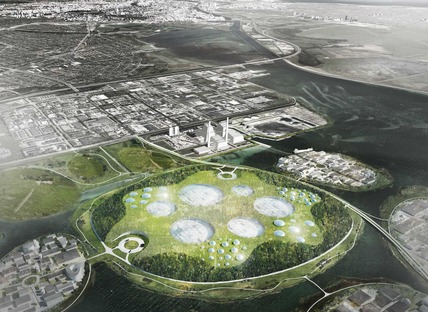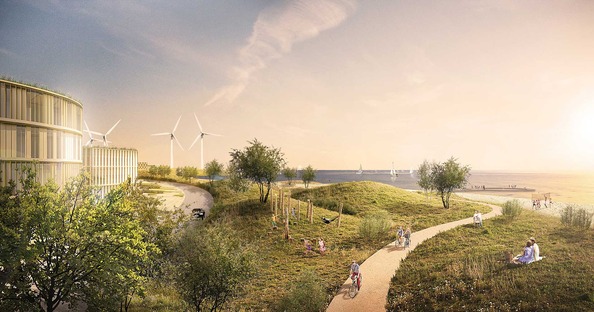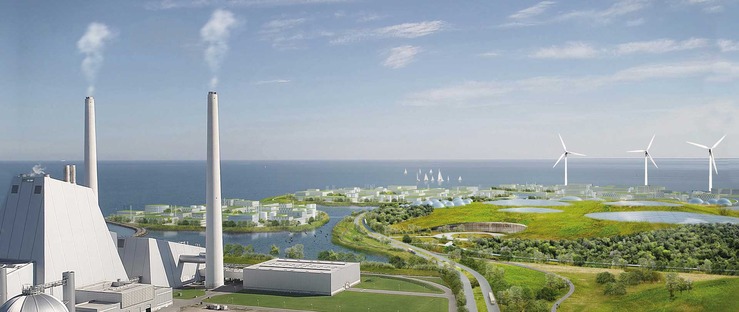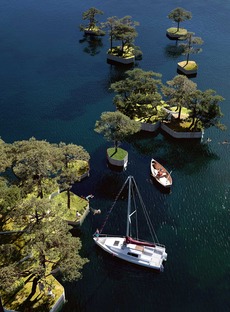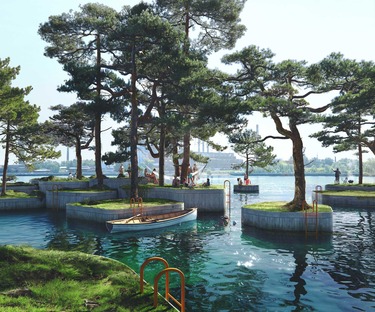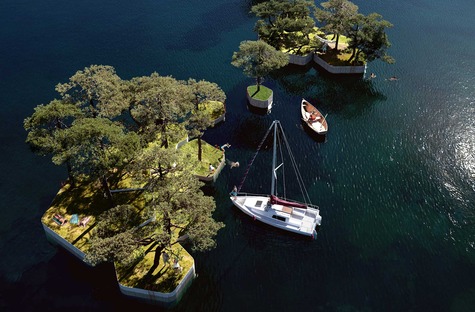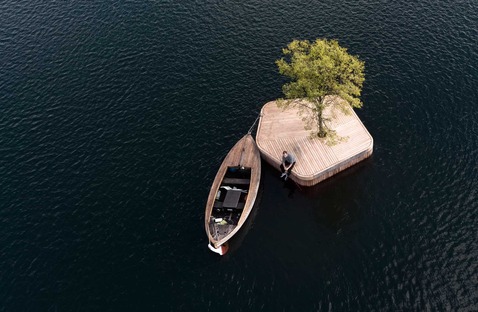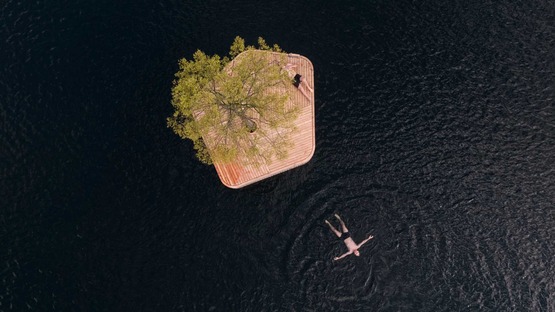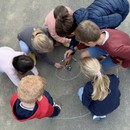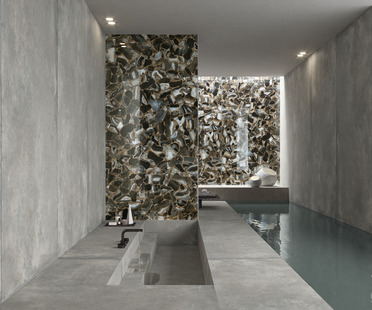14-12-2021
ISLANDS
URBAN POWER architecture & urbanism, MAST- Maritime Architecture Studio,
New York, USA, Copenhagen, Denmark,
islands,
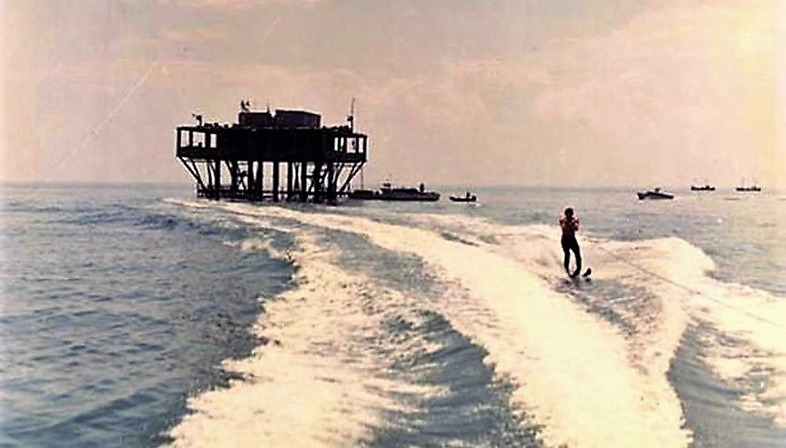
Paused...
There is certainly another aspect that made people dream: those dots scattered in the sea in total isolation, impossible to reach, represented an opportunity to manifest aspirations, dormant desires. But the magic of a landing in a different and unexplored dimension doesn’t end here, in the inebriating promise of the unknown and adventures: the condition of absolute solitude, far from a civilised life, obligations and restrictions, promises Eden of total freedom and absolute happiness, and for some untouched paradises, where to test or find themselves.
In this regard, a film was recently released that narrates a true, very unusual event, the incredible story of the ‘Rose Island’. About fifty years ago a young Bolognese engineer, Giorgio Rosa, had the idea to create, with the help of a fellow student, an artificial platform in front of the coast of Rimini, outside the Italian territorial waters, where to live according to his own rules. With a small group of supporters, who joined the adventure by chance, he assigned his micro-nation an official language, a government, a currency and a postal code, going personally to the United Nations’ headquarters in the hope to gain the recognition of independent state for his little isle. Although he received threats and attempts of corruption, he didn’t give up and, following the advice of his girlfriend, an expert in international law, decided to submit his case to Strasbourg. The Italian government, worried about the idea of creating a precedent, occupied and finally demolished the platform. The episode makes us reflect, even if in the film the protagonist appears not a revolutionary rebel, an anarchist eager to live far from institutional rules and obligations, but a young, hopelessly idealist inventor, who doesn’t want to renounce a dream that everyone believes to be a utopia, his desire to "see roses bloom on the sea".
It is from a long time latent desire, from 'an ambition', if we want to use the term expressed by the patron, that in New York was born the artificial island on the Hudson River, costing 260 million dollars, and other 120 for its maintenance, a gift that the billionaire Barry Diller donated to his fellow citizens. Controversies and insinuations have inevitably broken out regarding this generous philanthropic gesture, and about those pleasures promised by the incredible location someone, provoked by the amount spent, has compared them to “the pleasures of an obscenely expensive penthouse”, in an equally elitist area aimed at re-creating “the spectator-spectacle dynamic that is the essence of urban narcissism”. Not appreciated by many, the project has been compared to " a Monet painting sitting on a Dalí sculpture " and a lot has been ironized on the modules 'tulip pot', 132 precast concrete piles, weighting up to 68 tons each, used as supports for the “floating leaf on the water'', proposed as blossoming flowers: an enormous quantity of concrete that involved logistic operations difficult to justify.
Diller, contacted in 2012 to contribute financially to the reconstruction of Pier 54, seriously damaged by Hurricane Sandy, replied that he didn’t consider appropriate to help the redevelopment of the pier since it would probably no longer be usable for mooring boats, but instead he had an idea, that he had been nurturing for some time, that could become visually an icon on the New York waterfront. An international competition was launched, and in 2014 revealed the winning project that encountered a series of court battles prolonged for a long time, opposed by those who were concerned about environmental sustainability, protection of aquatic wildlife and those who were against such a high budget commitment for a long-term maintenance of the park. The Diller – von Furstenberg Family Foundation at this point agreed to provide for the park for the next 20 years, until new sponsors were found, paying also for all the program of the recreational initiatives offered on the island. After more than seven years, last May, ‘Little Island’, as it is called, was officially inaugurated. Defined by some as "New York's latest landing strip for theater, music, art - and ambition", the large expanse of 2.4 acres of green meadows and hills, pathways and resting points among 350 different species of shrubs, flowers and trees, despite the ostentation of a series of wonders, continues to receive negative response from the specialized press and media that don’t recognize it as the ecological and inclusive public space promised, seeing it only as a spectacular extravaganza.
There are other projects concerning new artificial atolls that, despite having provoked protest movements by environmentalists, advocate forward valid and urgent proposal, such as the need to protect the coasts from the threat of rising water level or the need to provide alternative energy sources. Copenhagen, known as the green capital, a true pioneer of sustainability, has been surprising us for some time now with cutting-edge initiatives that stand out for combining sense of responsibility and environmental awareness, and it is with a great teamwork that it is planning the construction of an archipelago, composed by nine artificial islands. The vision conceived by URBAN POWER architecture & planning will start shortly, in 2022, with an expected duration of 18 years. Holmene, which in Danish means precisely 'islets', will connect an expansion of 3 million square meters to Avedøre Holme, an area reclaimed in the 1960s, and currently one of the largest and best-functioning commercial districts in the region. Restoring the original landscape configuration, consisting of small islands surrounded by water and lush nature, the project will extend for 17 kilometers along the shoreline, providing protective barrier against possible floods and 700,000 square meters of new natural scenery in an urban location.The future ultramodern district, which promises to be one of the most innovative in Northern Europe, will be embraced by a "green belt", that thanks to its diversified vegetation will attract wildlife, above creating an active coastline with jogging paths, cycle paths, water sports and marine observation platforms for everyone. Technological companies, wind turbines for the production of clean energy and research centers will arise in this attractive environment. The atolls as geographic clusters will see circular synergies enabling knowledge sharing and joint branding activities.
One of these, Green Tech Island, will be reserved for green technology solutions, hosting a waste-to-energy plant, the largest in Northern Europe, after the famous CopenHill, since today considered the most ecological incinerator in the world. It will produce electricity from the waste disposal for 60,000 houses. The wastewater and organic waste from the entire region will flow here and be transformed into clean water or convertible biogas. The program has been planned to be implemented, divided and diversified in its functions on this group of islands, offering different types of ecosystems, with the possibility in the future, if necessary, to add, relatively easily, others. Technological innovation and sustainability constitute the soul of the realization, and even if the objectives that have been advanced sound super ecological, there have been oppositions about an exaggeratedly large budget, and problems of environmental and acoustic pollution, during the long period of the construction phase.
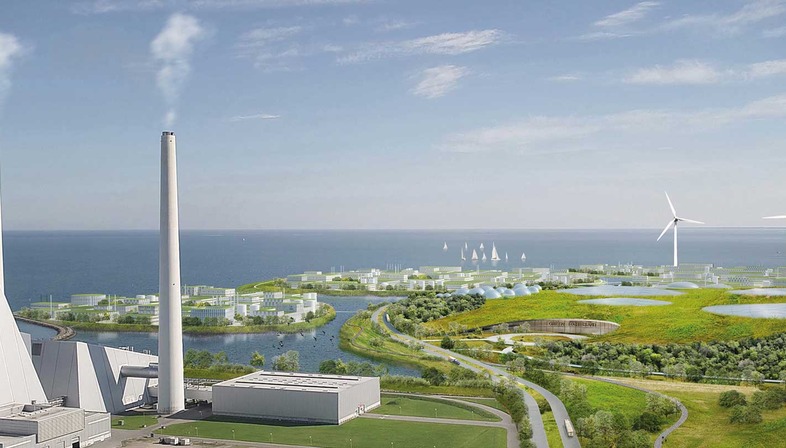
One of these, Green Tech Island, will be reserved for green technology solutions, hosting a waste-to-energy plant, the largest in Northern Europe, after the famous CopenHill, since today considered the most ecological incinerator in the world. It will produce electricity from the waste disposal for 60,000 houses. The wastewater and organic waste from the entire region will flow here and be transformed into clean water or convertible biogas. The program has been planned to be implemented, divided and diversified in its functions on this group of islands, offering different types of ecosystems, with the possibility in the future, if necessary, to add, relatively easily, others. Technological innovation and sustainability constitute the soul of the realization, and even if the objectives that have been advanced sound super ecological, there have been oppositions about an exaggeratedly large budget, and problems of environmental and acoustic pollution, during the long period of the construction phase.

If this project appears very ambitious, there is one even greater, announced as the most challenging in the history of Denmark. Last year an agreement was signed on the creation of the first 'energy island' in the world, that will be followed by a later one: the first will arise in the Baltic Sea and the second in the North Sea. An area of 120 thousand square meters will be dedicated to 200 giant offshore wind turbines that, exploiting the wind in the open sea, will produce electricity destined not only for Denmark but also for the surrounding countries. The Danish industry has enjoyed a 'pioneering position' in the wind sector in the past and continues to maintain it thanks to these achievements. The initiative, that envisages one of the highest amounts in the history of the country, is part of the plan launched since many years to reduce polluting emissions and to achieve the so-called 'climate neutrality' by 2050. Given the complexity of implementation, the plant will probably not produce energy before 2033.
Alongside these mega programs, it is with great pleasure that we are currently witnessing many small, but interesting proposals from a new generation of young Danish designers, who never cease to amaze us with the delicacy and sensitivity of their interventions, constantly in harmony with both the urban and human context. They face difficult environmental and social challenges, approaching the dialogue with profound respect, revealing an ethically responsible consciousness, an authentic spontaneous inclination towards a healthier, greener, happier, more socially and culturally liveable city and environment, without neglecting the lightness of playfulness.
From an idea, that uses simplicity and creativity to reach a result that enchants and captivates us for the pleasantness of its delicate gestures, have sprouted the tiny wooden floating atolls, scattered or gathered together in the South Harbour of Copenhagen, conceived and realized by the Australian architect Marshall Blecher and designer Magnus Maarbjerg of MAST, Maritime Architecture Studio. 'Copenhagen Islands' or 'Parkipelago', as entitled by its authors, is a set of modest realities that live separately but, thanks to the possibility of interlocking, like pieces of a puzzle, can be grouped together in a continuous and compact configuration, as a floating stage for festivals, concerts and live events.
There are many ingredients that make these islets truly special, the freshness of a shape that evokes the design of a child, a sophisticated research that knows how to maintain the charm of ingenuity. It’s with natural spontaneity that they appear zigzagging and wandering along the current from one bank of the river to the other. Each tiny artificial oasis, in its apparent elementary aspect, hides an authentic dedication to the smallest details, an amazing passionate commitment that has followed every single phase of the construction process: the initial prototype, called Ø1, approximately 20sqm of surface, handmade with recycled material, using boat building techniques, is kept afloat thanks to 4,000 recycled plastic bottles with mussels and seaweed-growing beds in the lower part, in order not to interrupt the continuity of a suitable habitat for fish and marine creatures.
A synthesis of craftsmanship, simplicity and close connection with nature, an ultra green model created for offering with various ‘sisters’, united by the same DNA, but all with a different identity, more public spaces scattered around the city, platforms moored near the coast or spread among the waters reachable by canoes, kayaks, boats, windsurfing or simply by swimming. A slender 6-meter tall linden tree, sponsored by Scandinavian Instant Trees, SITAS, a Danish company that helps to plant trees in public spaces, shades its deck while the subsequent cloning differ in gardens or mini forests, small flowery or aromatic plots where people can sunbathe or sit down to fish, jump off a diving board or dive into the sea, have a picnic with friends or relax with a good book, or even enjoy a sauna. Freely available for everyone, even during the winter season with more terrestrial activities, the islets, variegated universes, anchored or moving, capable to satisfy the need for isolation or conviviality, are inspired by the desire to fulfill the most varied needs, providing a sustainable way to spend with pleasure and fun free time in the clear waters of the inner harbour, and revitalizing abandoned parts. The project, laudable for its ability to communicate so naturally with the context and to complete the urban greenery like a real floating natural park, finds an intelligent way to catalyze and liven up social life. Sometimes certain ideas, despite having very limited budgets, can fill gaps, which are perhaps latent and satisfy less obvious but equally important needs, nurturing the pride and joy of belonging to very vibrant cities.
Virginia Cucchi
Credits:
'Island of Holmene'
URBAN POWER architecture & urbanism
Photos/Render: 08-12, Island of Holmene, courtesy of URBAN POWER architecture & urbanism‘Copenhagen Islands’
MAST (maritime architecture studio)
Photos/Render: cover, 13-17, 'Copenhagen Islands’, courtesy of MAST (maritime architecture studio)Photos:
02: ‘Rose Island’- Wiki/Public Domain
03, 07: 'Little Island', New York, by Yoav Aziz/Unsplash
04-05: Little Island', New York, by Ben Michel/Unsplash
06: Little Island', New York, by Heber Galindo/Unsplash
07: Little Island', New York, by John Angel/Unsplash










